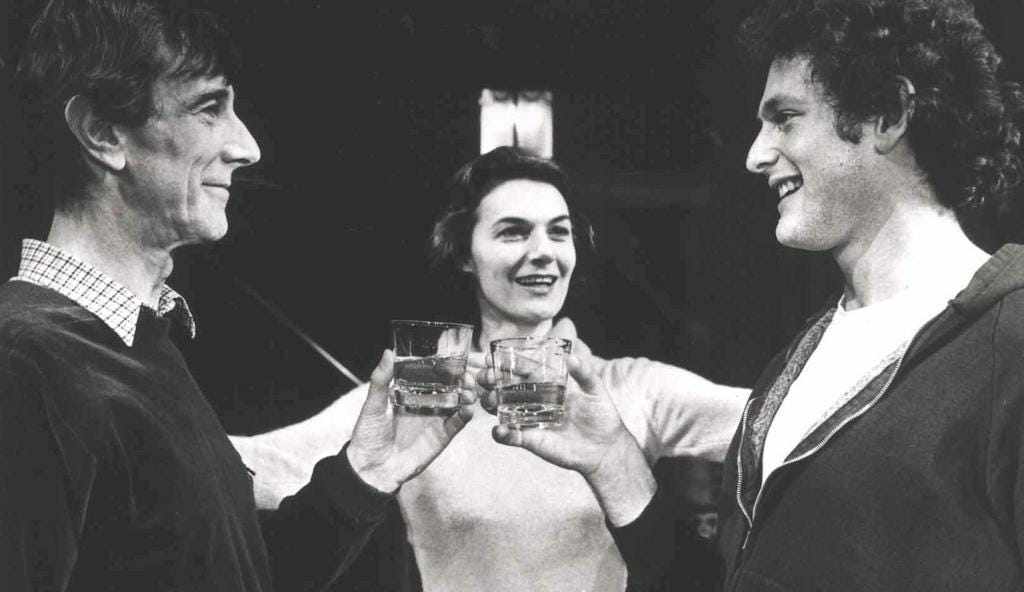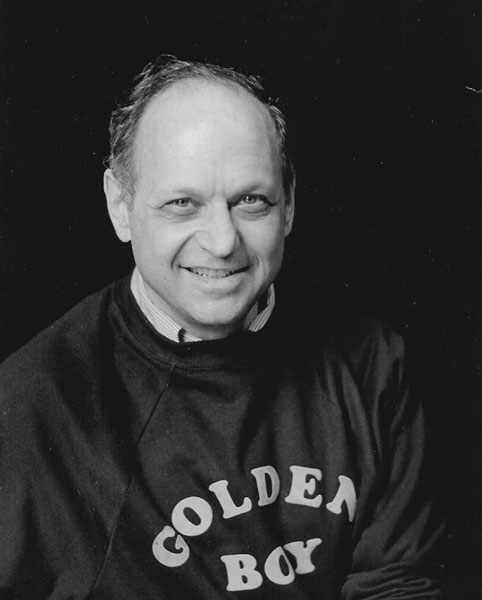
October 12, 2022: Theatre Yesterday and Today, by Ron Fassler
As I take to the keyboard to write a tribute to Angela Lansbury, who passed away yesterday five days shy of her 97th birthday, I’m surprised I had never gotten around to doing so before. Perhaps it’s due to it being such a daunting task. Not only encapsulating a career that spanned eight decades, but attempting to define the depth, breadth and scope of her talents. On the award circuit alone she managed three Academy Award nominations, culminating in a lifetime achievement Oscar in 2013, eighteen Emmy nominations (though oddly without a completive win) and her still unchallenged four Tony Awards for Lead Actress in a Musical, topped by a fifth for Featured Actress in a Play in 2009, with the cherry on top of a special Tony presented just this past June. I was present that night at Radio City Music Hall and wasn’t surprised, due to her advanced years and the threat of Covid, that she didn’t fly out from her Los Angeles home to receive it. But when some sort of video message from her failed to materialize, I wasn’t alone in the fear that it was perhaps a message of another sort, which sadly proved to be the case.
Angela Lansbury worked in every genre in roles of all kinds. Beginning as an ingenue in films, she made her debut in 1944’s Gaslight, which also served as her first Oscar nomination for Best Supporting Actress. She was only seventeen when she shot it and was quickly signed to a seven-year contract at MGM, the most powerful movie studio of them all. In that same year, National Velvet was released, in which she played Elizabeth Taylor’s older sister. She was Oscar nominated again the following year for 1945’s The Picture of Dorian Gray. These first three experiences were prime, only to turn sour as actors on contacts in those days had no say in the roles they played and, frankly, MGM didn’t quite know what to do with her. Take for example that this future star of the musical theatre wasn’t even allowed to do her own singing in the Judy Garland musical The Harvey Girls. Cast older than she was throughout her tenure, often as a villain, she once commented “I kept wanting to play the Jean Arthur roles, and Mr. Mayer kept casting me as a series of venal bitches.”

She got out of her contract in 1952, but the films she made independently were hit and miss (mostly miss). She worked throughout that decade in the booming television industry, but nothing served as a catapult to better roles. With a growing family to support, she appeared on things like the game show Pantomime Quiz. She engaged in stage work and over the course of the next five years toured in a few plays, finally finding her way to Broadway in an 1886 Georges Feydeau-Maurice Desvallieres French farce Hotel Paradiso opposite Bert Lahr only to see it close in three months.

Almost as if doomed to play older than her years, her vanity played second to recognizing a good role when she saw one. Which is how Lansbury came to be cast opposite Joan Plowright, four years her junior in Shelagh Delaney’s groundbreaking A Taste of Honey. This was the show that did the trick. It ran a year and Lansbury felt secure enough that a career in the theatre was going to provide her with the challenging work she desired, as well as status.

This was also around the time that John Frankenheimer came calling and cast her in two fine films, both released in 1962, All Fall Down and The Manchurian Candidate. Though only three years older than actor Laurence Harvey, she dominated the proceedings as his diabolical mother and earned her third Academy Award nomination. However, even if she’d won, things might not have changed for Lansbury since all she was offered after was more of the same. Mothers, mothers, mothers.

Luckily, what came next was a break from all she’d done in her prior twenty years as an actress when she was cast as the lead in a new musical titled Anyone Can Whistle. As all theatre aficionados know, this was the shortest run of any Broadway musical Stephen Sondheim would be associated with in his long career. But those who saw any of the twelve previews or nine performances were astonished by Lansbury’s brashness, clarion voice and musical theatre elan.

It was now time to find her a better vehicle.
Enter Jerry Herman and Mame.
Having the good fortunate to be one of the few thousand people to see Anyone Can Whistle, Herman had a sneaking suspicion Lansbury was his Mame — and Angela Lansbury felt exactly the same. Sadly, the first time she flew in to audition for it from her California home didn’t make much of an impression on Josh Logan, then the director. “No one wanted her,” Herman explained years later in a television interview. “One of our producers said, ‘That’s the lady who plays everybody’s mother.’”
When Logan left the project, auditions continued even without a director, which is when Jerry Herman took it upon himself to ask Lansbury to return to New York one more time with the proviso that he would personally coach her. Detailed in Martin Gottfried’s 1999 biography Balancing Act: The Authorized Biography of Angela Lansbury, Herman thought “she was very raw,” but instinct told him that “she had a real instrument.” Her [Lansbury’s] efforts with the California voice coach had not been in vain. She’d added two or three notes to the top and bottom of her range. “With some work,’ Herman thought, “she’ll be able to sing everything I’ve written for the character.”
So, a plan was hatched. Herman told Lansbury “these producers have only heard me singing the songs (“It’s Today” and “If He Walked into My Life”), which is not very exciting. But if you step out on the stage and sing these two songs, they won’t know what to do with themselves.” And to further her chances, on the day of the audition on stage at the Palace Theatre, Herman snuck away and found his way into the orchestra pit. According to Gottfried: “As planned, Angela stepped out of the wings, dropped her mink coat to the floor, and strode to center stage. At the piano in the orchestra pit, Herman began to set up the song with a flourish. Then Angela sang out:
Light the candles, Get the ice out, Roll the rug up, It’s today!
End of story. No, not yet.

When director Gene Saks was engaged to helm Mame he wanted Lansbury to once more travel 3,000 miles across the country and re-audition. Adamant she shouldn’t have to, it was her family who enticed her to go. Ever so humbly, she returned.
Though according to Gottfried’s account, this didn’t end the indecision of who would be Mame: “When she was finished, Jerry Herman caught her eye and pleaded and begged for patience. She flashed Carr, Fryer, Bowab [the producers] and Saks her best bullshit smile. She was furious.” — Lansbury had had enough: “Look, she said, “this has been going on for a long time. Right. But this is it. I am going back to California and unless you tell me” — she paused, struggling to contain herself — ‘I mean, let’s face it, I have’ — her voice nearly broke — ‘prostrated myself. Now — yes or no — that’s the end of it. I want an answer. I must know before I leave New York because I’m not coming back again.”
Finally, as reported by Gottfried, “Saks called Lawrence Carr and told him it was a go. The producer walked out of the office and over to the Plaza, where he went up to Angela’s room and told her, ‘We are offering you Mame.’ And so, after twenty-three years as a professional actress, having performed in thirty-six movies, twenty-six television plays, and three Broadway productions, at the age of thirty-nine Angela Lansbury finally had a leading role.”

And believe it or not, we’re only halfway through the career of Angela Lansbury. Please stay tuned for part two tomorrow.
If you enjoy these columns, check out Up in the Cheap Seats: A Historical Memoir of Broadway, available at Amazon.com in hardcover, softcover and e-book. Also, please follow me here on Scrollstack and feel free to email me with comments or questions at Ron@ronfassler.org.





















Write a comment ...